From F-22 to Viper
In 1927-29, in the framework of the beginning of the “recovery of industry” and industrialization of the country, new design teams are being created to develop new weapon systems. And already in 1927, the Artillery Directorate [AU] of the Red Army gives an order to develop new artillery systems that "meet the conditions of warfare to the new conditions." Carrying out this order, a special commission of the Art Department, chaired by Grendal with the participation of Ordzhonikidze and Tukhachevsky, put forward demands for artillery systems of a "new type". According to the requirements put forward, the first was recognized as obsolete by the Red Army, which was in service with the divisional gun mod. 1902
The reasons for the non-compliance of the gun with the new requirements were:
1. Insufficient firing range
2. Insufficient power of 76-mm grenades against field fortifications
3. The impossibility of shooting at high angles of elevation, necessary for the defeat of fortifications and the destruction of manpower, located behind the closures. To overcome these shortcomings and equip divisional artillery with modern materiel, it was proposed to adopt for the Red Army a modernized three-inch gun with a barrel length of at least 40 caliber or a universal gun - 76-102 mm caliber with a 30-50 caliber gun.
To study the characteristics of such a howitzer cannon in the 1929 t., An “experimental gun” was manufactured using a carriage from the 48-linear howitzer and a gun barrel from the “three-inch” length of 30 and 40 calibers. The gun was subjected to numerous trials, however, but the opinion of the Red Army’s mobile administration was considered to be too expensive for mass production with insufficient combat characteristics. Despite the fact that the plans of the AU was the development of a new bore caliber 85-mm. work on it was stopped.
However, in 1930, in the USSR, through various channels, information was received that Germany, France and Czechoslovakia were planning to completely abandon their division artillery from 75-mm cannons and replace them with light howitzers and howitzer-guns 83-. or even 105 MP This fact once again woke up the interest of the mob management in the creation of the national divisional gun-howitzers. And soon the Perm Plant Design Bureau offered to the attention of the Directorate a “universal” and a V.Sydorenko design cannon (howitzer). It differed from the previous one in that it received a longer barrel (30 caliber), located again on the carriage of the 48-linear howitzer mod. 1910 d. Despite the conclusion about the insufficient power of the 70,2-mm grenades and the requirements for increasing the caliber, this gun-howitzer with the filing of M. Tukhachevsky was put into service "as is" under the name "universal divisional gun mod. 1933 g. "And was intended for firing ammunition from a gun arr. 1902, followed by the development of a special "high-explosive shot of increased power." However, this gun was put into service only temporarily "until the development of a new divisional universal long-range gun." Gorky plant "New Sormovo" was supposed to be engaged in mass production of the gun, which after some modifications assigned it the index F-19-1.
The design team of the Novaya Sormovo plant (better known as the wearing 92 dead) under the leadership of V. Grabin was engaged in mastering the serial production of this tool and in 1934, offered to the MoBuRAN administration its design of the universal divisional gun. It should be noted that in those years the word "universal "Belonged specifically to howitzers cannon, as possessing the property of" howitzers. "At first they did not think about the possibility of anti-aircraft firing from divisional guns. However, in 1934, at the request of AU and personally M. Tukhachevsky, this method of shooting was included enters the list of obligatory for divisional artillery and soon the latter demanded to modify its design so that this weapon could conduct anti-aircraft fire. The gun in question now became known as “universal with anti-aircraft fire”, and in 1937 was classified into “semi-universal.” In March, 1935, the Novoe Sormovo plant was supposed to submit the first three guns to test shooting.
The gun had for its time a revolutionary design with a wedge bolt, mechanical semi-automatic (later, copier type] and sliding beds, allowing quick maneuver with fire. According to the requirements of the AU, the gun was first designed to use “Rhinemetal-type” ammunition cannon ”type Ranemetall” arr. 1931 g. (ZK), for which the group of ammunition should have been in time no more than 3 months, to develop also a reinforced high-explosive fragmentation grenade weighing 7,4 kg. And for the use of cartridges sample 1931 g., Push e needed a muzzle brake.
In March 1935, three F-22 guns were ready for testing. Two of them had folding beds of the “German type”, and one - solid. Field tests of F-22 prototypes were carried out in June-July 1935. Already during the tests, the customer introduced amendments to the TTT for the gun, the consent of which the use of the muzzle brake was considered unacceptable. In addition, it was prescribed to refuse to feed the gun from the use of ammunition cartridges. 1931 G. in favor of the cartridges "triple" arr. 1902
Generally with the ammunition for the gun there were always some inconsistencies. The fact is that the requirement of howitzer cannon and turning it into a universal howitzer cannon was met, but its use in a howitzer did not give any particular advantages. After all, the howitzer had a separate charging, allowing to vary the magnitude of the charge and the steepness of the trajectory. In the unitary cannon shot, such a selection was practically excluded. And the rejection of unitary loading sharply reduced the rate of fire of the 76-mm artillery system, which was considered unacceptable for divisional artillery. However, with the decision to use the cartridge in the gun arr. 1900 / 1902, it became possible to use in the F-22 as a "howitzer with a reduced charge" shot from the regimental gun mod. 1927 was well established by industry, which somewhat defused the situation and gave rise to a number of enthusiastic letters at various levels. Therefore, in spite of the fact that such a “gauubization” became half-hearted, it arranged for the leadership of the Red Army, writing off part of the headache without special expenses.
At the end of the first test phase, 6 July 1935, Plant No. 92 received an order to manufacture a series of 10 guns, taking into account the wishes of the customer. The first battery of serial guns arrived at the test site at the beginning of March 1936. And the 11 in May 1936. “The 76-mm universal advanced divisional gun obr. 1936 g. ”Was put into service, and according to the government resolution No. OK 110 / ss, already in 1936, the transfer of an army of at least 500 new artillery systems was assumed. The manufacture of guns was to be carried out by Plant No. XXUMX “New Sormovo” and “Kirovsky Plant” and it was expected that they would soon overrun the Red Army. However, the gun was quite difficult for both enterprises at that time and for three years the plans for its release were not consistently implemented.
| The release of divisional guns F-22 1U36-1940. | ||||
| 1936 | 1937 | 1938 | 1930 | 1940 |
| РїР »Р ° РЅ 50 | 500 | 2500 | 1500 | - |
| 16 release | 437 | 1000 | 1500 | 3 |
| 10 acceptance | 417 | 1002 | 1505 | - |
This was due to many factors, including insufficient qualifications of designers, insufficient experience of technologists, lack of metal-cutting machines, tools, electricity, shortcomings in the organization of production. Much more difficult than expected, turned out and care for the gun in the army. Yes, and it was not very suitable for horse-drawn carts with six horses, having a mass of more than one and a half tons.
Various modifications to the design, aimed at cheaper production, also added weight to the gun. Thus, the introduction of the “one-and-a-half” and “second” stages of the cast lower machine into the guns instead of the riveted-welded ones, the strengthening of the breech's strength and the strengthening of the automation mechanism made the system heavier with 75 kg documents. And some guns, according to the acceptance certificates, had a mass of even more than 1800 kg.
It is interesting that for a long time the gun was not tested at all as an anti-aircraft gun, since before 1937 the PUAZO was not developed for it. But at the end of the 1937, the F-22 was aimed at the NI-ENP, where it proved to be unsuitable for firing anti-aircraft fire, and therefore not corresponding to the class of "semi-universal ground-anti-aircraft divisional gun."
The service of the cannon in the Red Army did not last long, since in 1940 it was considered “overly complex, heavy and technically unreliable for mass army equipment”. Therefore, with the arrival of troops 76,2-mm divisional guns arr. 1939, their predecessors were to be handed over to military warehouses. This process began in the spring of 1940, after the end of the Soviet-Finnish war, where a certain amount of F-22 was lost (which allowed the Finns to bring 1940 by July into serviceable guns into their 36 army), and again the guns showed some flaws, caused mainly by their work at low temperatures.
However, the complete delivery of F-22 cannons to factories at warehouses was prevented ... by the French campaign. The fact is that according to intelligence (later it turned out to be erroneous), during the French campaign, the Germans used thick-armored Tanks, "Which fearless modern anti-tank weapons of Britain and France," It was necessary to urgently do something. Many artillery designers began to develop a new generation of armor-piercing weapons, and the commanders took care to create special anti-tank formations.
Spring 1941g. in the USSR, the formation of 10 anti-tank artillery brigades began, each of which had to include but 48 F-22 guns. At the same time, the Commissariat of Ammunition was assigned the task of working out a reinforced armor-piercing shot for the 76-mm anti-tank (this was how it was named in some documents) and anti-aircraft guns with a large barrel length. At the same time, SRI-13 (since OKB-92 was engaged in the rapid development of the 57-mm anti-tank gun), as if recalling the well-forgotten old, suggested upgrading the F-22 to the level of a “high-power anti-tank gun”. The essence of the proposal was to return to the use of the 76-mm 3 K anti-aircraft cannon shot and add the muzzle brake to the F-22 design, as well as to facilitate the carriage. This proposal was considered in May by 1941 and a decision was made to manufacture a prototype of such an “enhanced anti-tank gun F-22” in the third quarter and to test it. But these plans were not fulfilled. The war began.
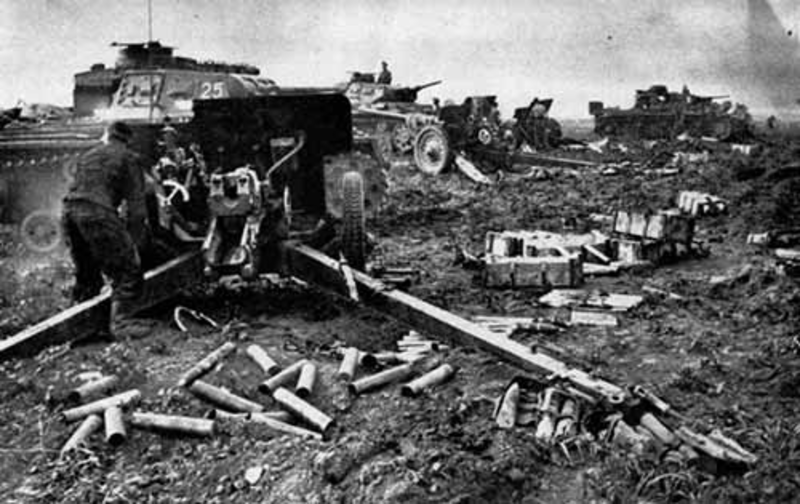
According to county reports on 1-15, June 1941. In the forces of the Western direction, there were X-NUMX F-2300 cannons, of which 22 units, required a large or major overhaul in an artillery factory (see the table). The main problem for the use of these guns in the army was the lack of traction equipment, which was still the acute shortage of the divisional artillery of the time, the STZ-131 "NATI" tractor and ZIS-3 trucks.
| MVO | Awards | ZapVO | Cova | OdVO | Total |
| 209 | 300 | 629 | 810 | 256 | 2300 |
Sadly, the Red Army had no shortage of 1941 in the Red Army in the summer and autumn, as the 1’s 1941’s nurse had only a little more than 24 LLC shots, or actually 10 units. for each F-22. not to mention the other guns of the division, regimental, tank and anti-aircraft artillery, which used 76-mm rounds arr. 1902 / 30 and arr. 1931 This was despite the fact that the pre-war standards mobilization stock of armor-piercing ammunition for non divisional guns should be the no 200 shots on the trunk (for estimates of the Commissariat of ammunition - at least 100 rounds on the barrel), and for anti - at least 500 shots per barrel .
This largely explains the fact that the commanders of the batteries supplied to the VET, often reporting on the destroyed tanks, wrote something like this:
During the summer-autumn battles of 1941, almost all F-22 guns of Western forces were lost in battles or during retreat. According to various sources, during the battles of 1941 summer, the Germans got at least 1000 pcs. serviceable F-22, some of which they began to use, as they say, without departing from the cash register. " Tests of captured weapons, conducted in August 1941, showed that the gun can be used as a powerful anti-tank weapon. Already in September 1941, the unmade trophy F-22 was adopted by them with the mod name 7,62-sm PaK 36 (r) and the release of the PzGr projectile, and the improved PzGr 39, began immediately. In October-November, the PzGr 36 sub-caliber projectile is also injected into the X-NUMX (R) ammunition. Shots with high-explosive fragmentation grenades were originally used by the Soviet. In this form, the ex-F-40 went to North Africa, where artillery systems were very much needed to fight British infantry tanks. However, the armor penetration of such a heavy weapon, but the feedback from German specialists was still insufficient.
True, in October 1941 g, for F-22, UVS and regimental gun mod. 1927. The Germans are adopting several types of cumulative projectiles, but the major modernization of the F-22, as they say, has matured. Research by Rheinmetall specialists showed that the design of the breech part of the gun and the barrel makes it possible to more than double the powder charge in it, although it will be necessary to supplement the gun with a muzzle brake. Especially for the reinforced gun, a shot was made with a sleeve of 716-mm length (the same one that went to the 75-m. Cannon 40 Cannon) against the old ones that had a total length of 385-mm. In the gun to the size of a new liner, the charging chamber was squandered and a two-chamber muzzle brake was installed. To facilitate the aiming at the gun, the angle of vertical guidance was reduced to 18 Grad, and the flywheel of the lifting mechanism was moved from the right side of the gun body to the left. In view of the uselessness of the German designers blocked the mechanism of variable rollback, cut off the height of the shield.
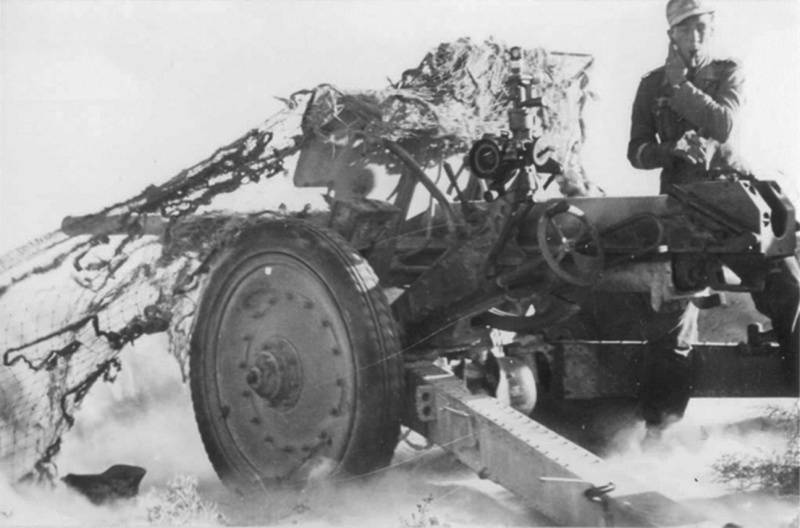
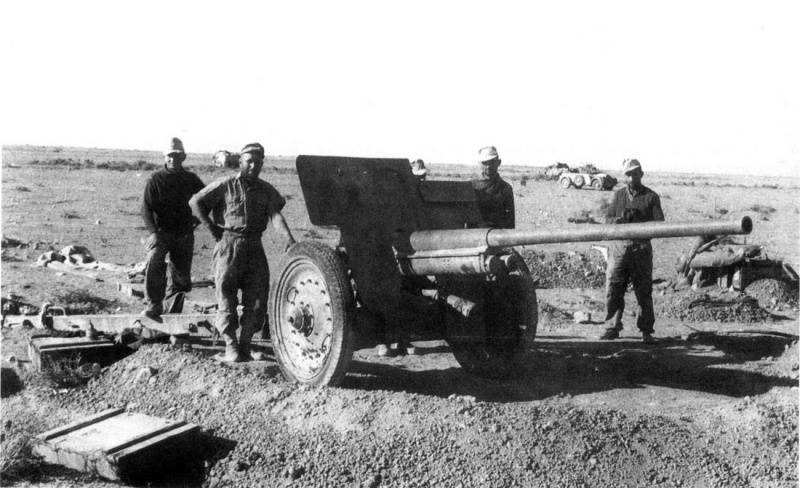
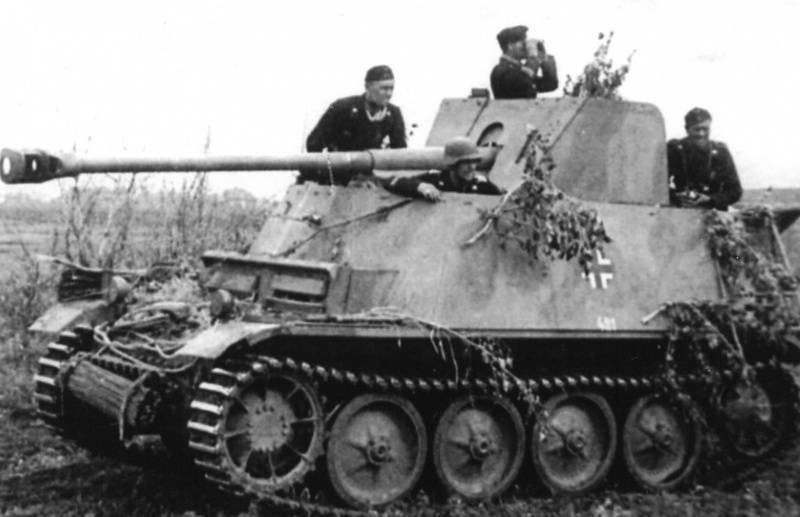
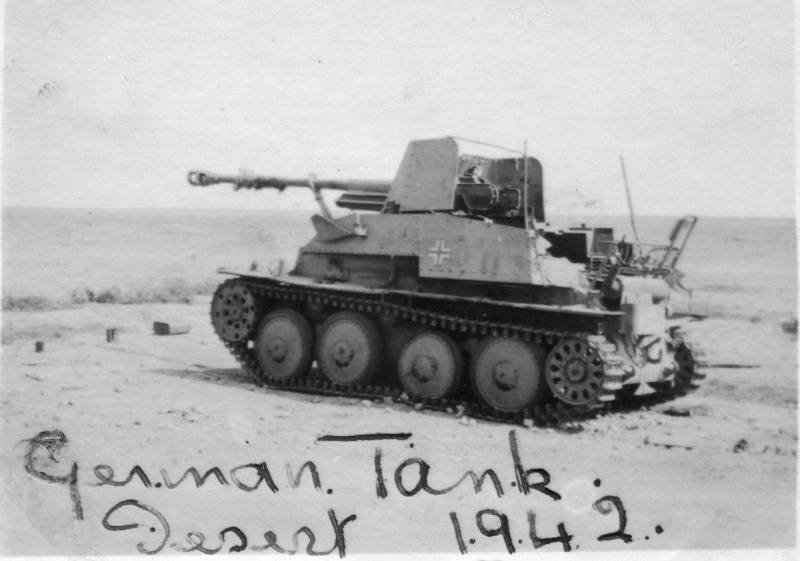
In this form, retaining the former name 7,62-cm RAC 36 (g), the former Soviet F-22 went to the front more massively. In order to avoid confusion, all non-converted F-22s in the German army received an FK index. 296-1 (g) or less frequently FK 36 [g],
In addition to towed guns, the Germans also developed the installation of the PAC 30 (g) on the chassis of their light tanks PzKpfw II ausf D and PzKpfw 38 (1). Such units got their own name “Marder” (marten), with F-22 ya chassis PzKpfw 11 being christened as “Marder II”, and yf chassis PzKpfw 38 (t) as “Marder III”. It was in this variant that the highest priority was given to the trophy gun that had undergone alterations and received a small addition to the name Cancer Zb (r) fur sfl (for self-propelled gun carriages).
The conversion of the Soviet divisional guns into the anti-tank guns was carried out mostly in 1942-43, but the army continued to be shipped in 1944 (repair).
| Cannons | (1942) 1943 1944 | 1945 |
| Winemaking | 423 127 | - |
| XaNumx RAk Shipping (g) | (358) 169 44 | - |
| RAC 36 (g) auf sfl | 671 223 | - |
| SprGi (Osk-Fug | | (769,4) 1071,3 957.7 | 14,3 |
| PzGr / PzGr 39 (VRB) | (359,4) 597,3 437,3 | |
In addition to the already noted towed and self-propelled guns, the German army had at least five self-propelled guns made of F-22 guns mounted in an armored body of five-ton tractors and used in Africa.
Thus, starting with 1942, a significant part of the F-22, joined the active struggle with their former owners. Despite some overload, the gun was successful and until the wide release of the 40 Cancer, was considered the most powerful German anti-tank gun. In Soviet troops, the Germanized version of the cannon was called the Viper or the Cobra. At the beginning of 1943, after Stalingrad, these guns, if captured, were recommended to be reduced to anti-tank batteries and high-powered battalions. But sometimes they were manned by ordinary artillery regiments of divisional artillery.
It is interesting to note that the evacuated plant. No.8 to 1943g. He studied the issue of resuming the serial production of the F-22, modified for using the 76-mm high-power ZK gun, on a simplified carriage according to TsACB drawings, but the matter did not move further.
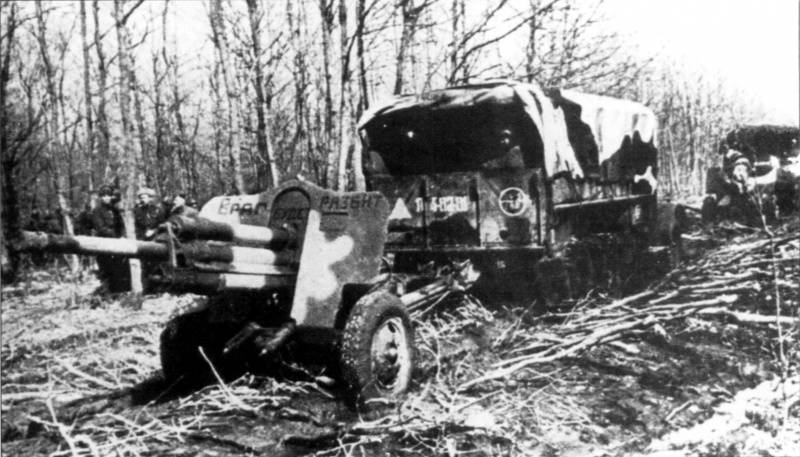
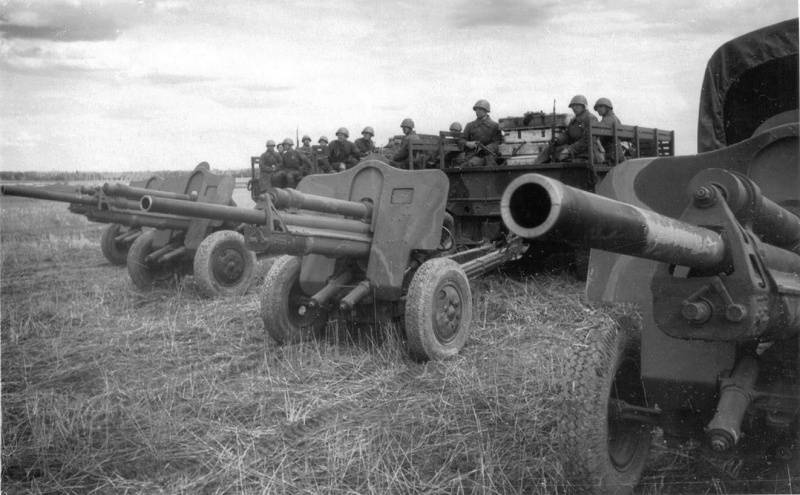
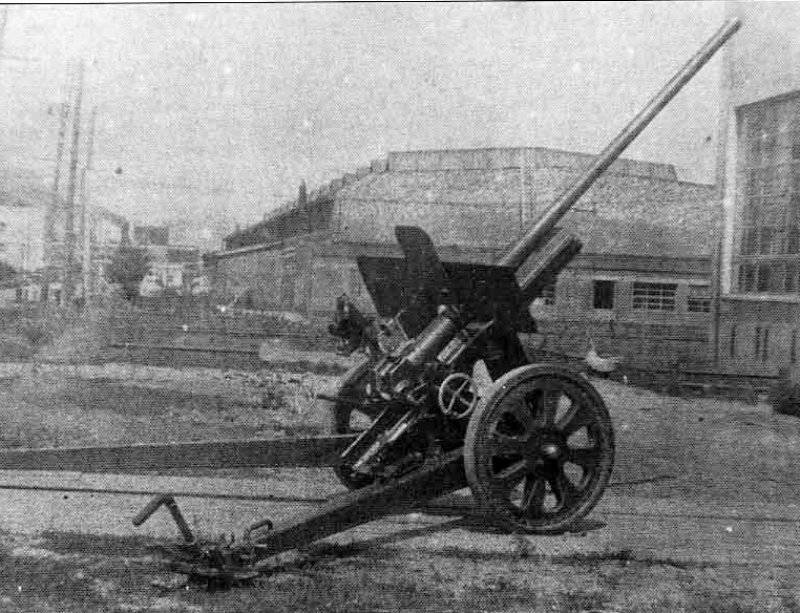
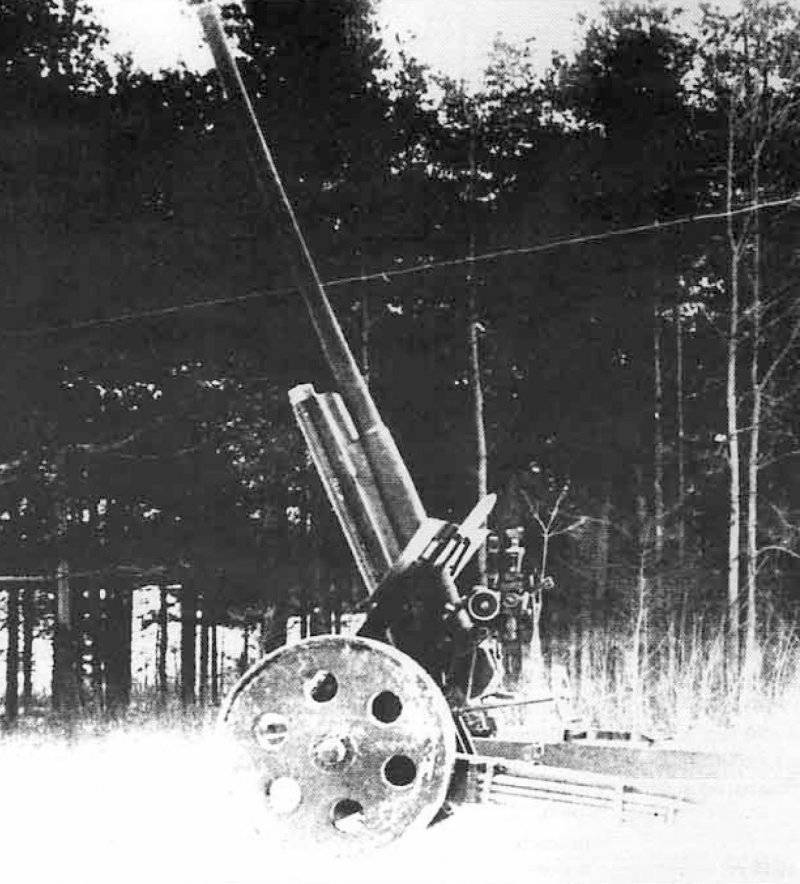
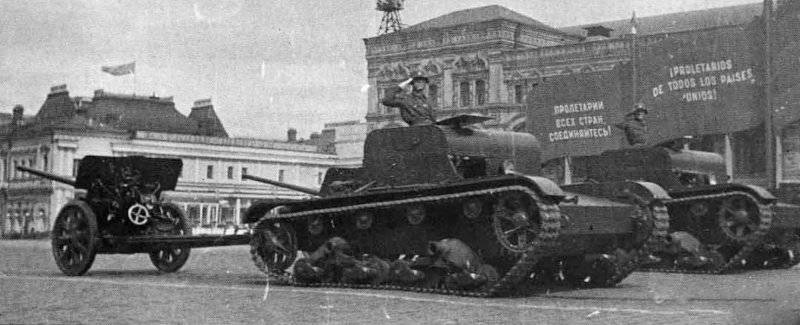
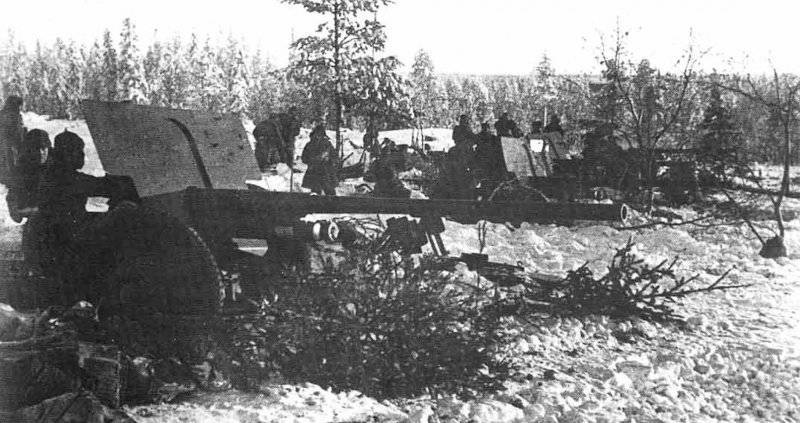
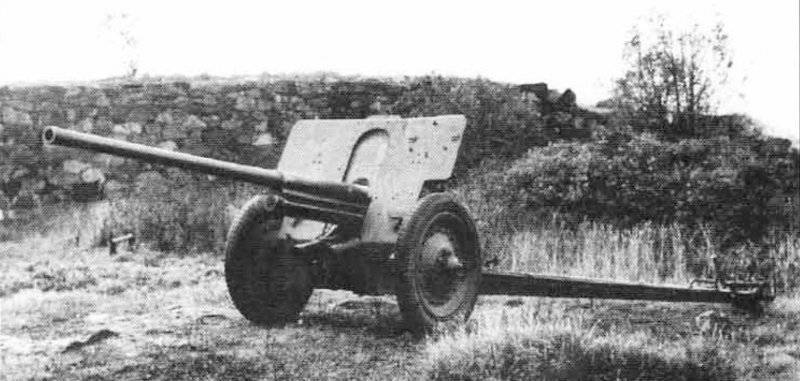
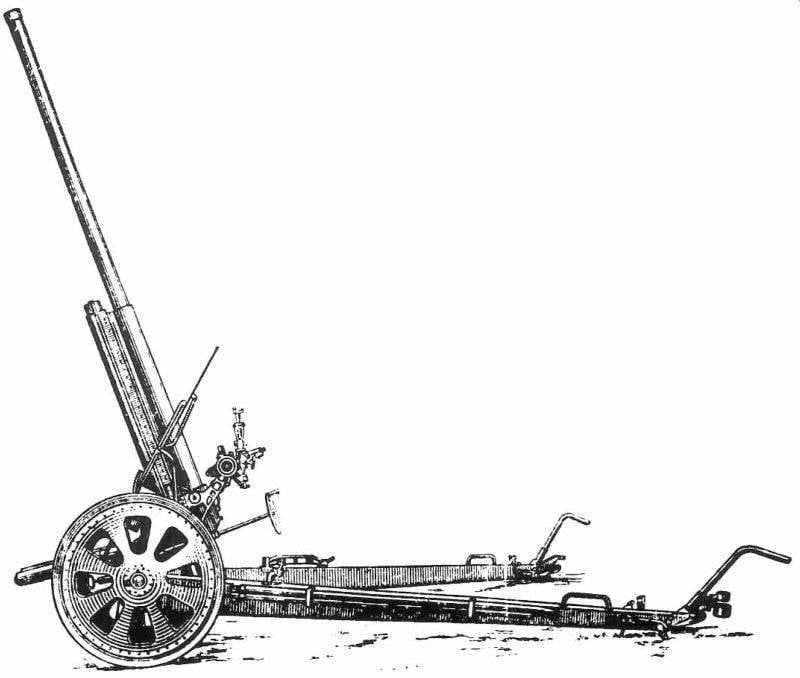
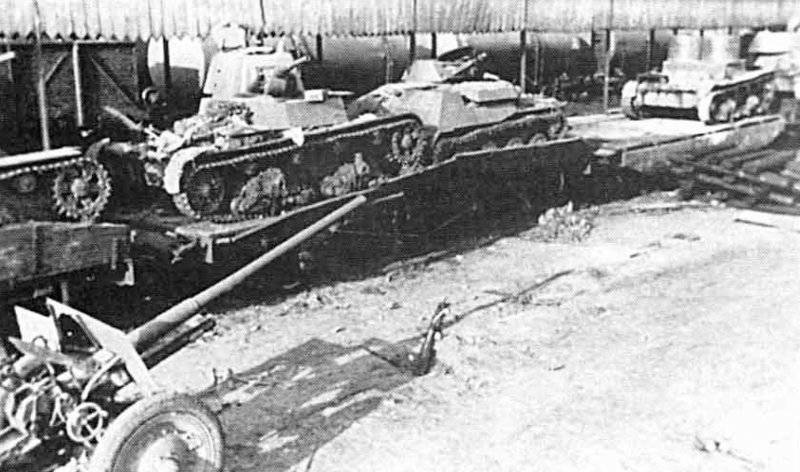
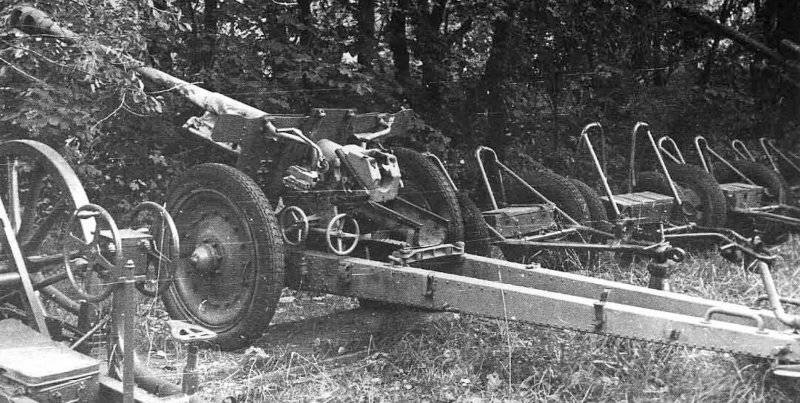
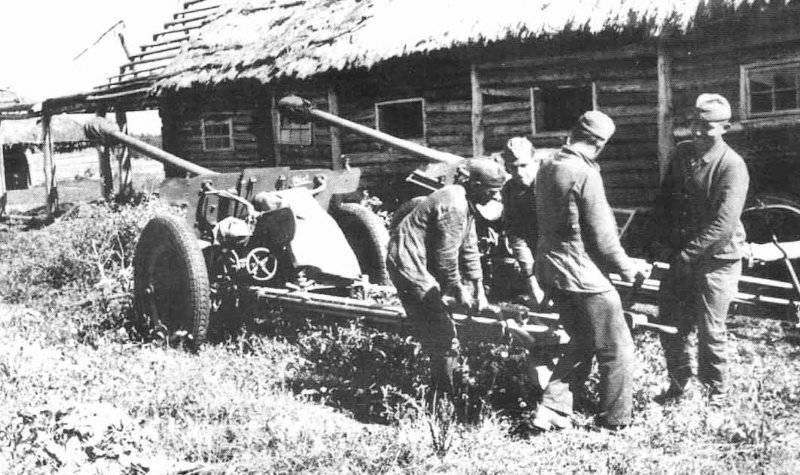
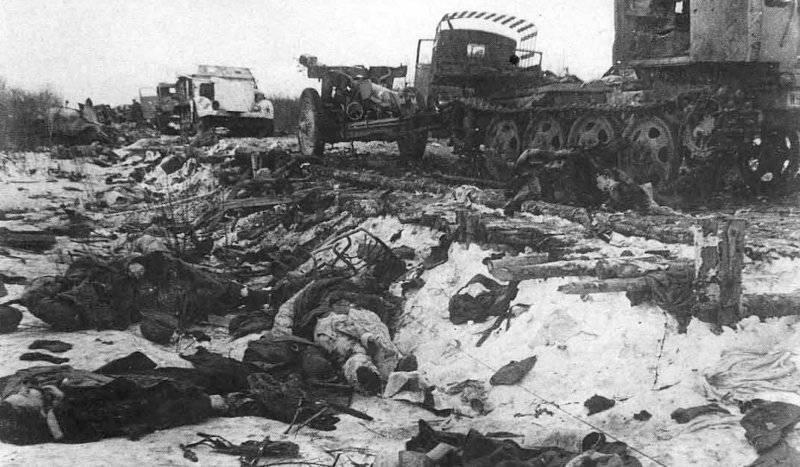
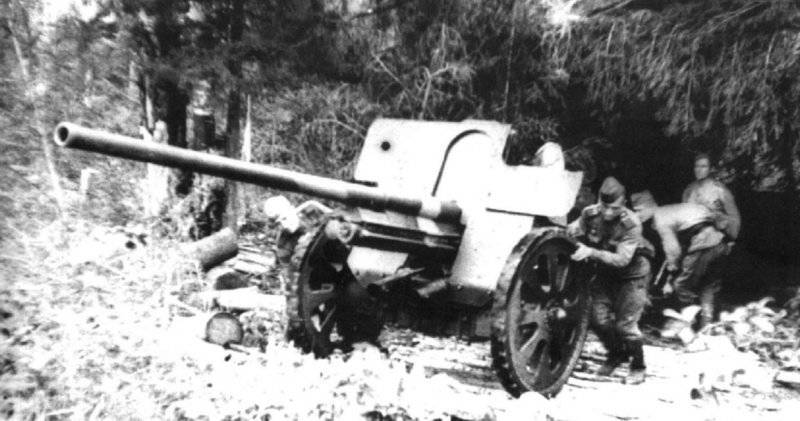
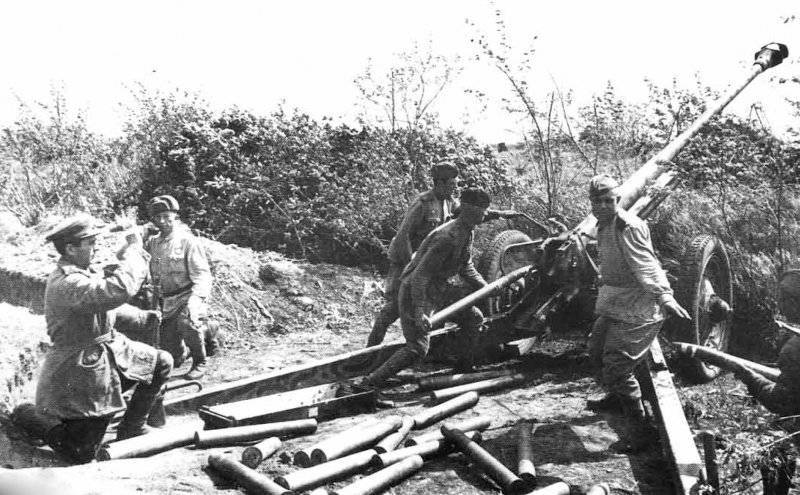
Information